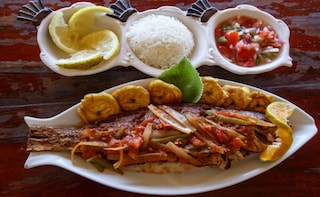Parsis all over the country will be celebrating Jamshedi Navroz on 17th August 2017 as per the Shehenshai calendar. The term Navroz is derived from two Persian words, 'nav' meaning 'new' and 'roz' meaning 'day'. Hence, Navroz signifies 'a new day'. According to ancient Zoroastrian beliefs, the king of Persia, Jamshed ascended the throne on this auspicious day. A Navroz meal is an epitome of the perfect feast. The morning begins with delicious plates of sweet sev (vermicelli) served with sweet dahi. Homes are decorated with colourful chawk patterns (rangoli) and torans (flower garlands) swing from the doors. The whole family is dressed in new clothes and visits the Zoroastrian fire temple. Boxes of Mawa Ni Boi (mawa sweet moulded into a fish) are sent to friends and relatives. Fish is a symbol of good luck and prosperity for the Parsi community. Dhan Dar Dar Patio (a simple yellow dal served with a spicy seafood pickle), followed by Ravo (a milk-based dessert) for Mitthoo Mohnu (to sweeten the mouth) makes a typical Navroz lunch for Parsis.
Where will they find place for themselves? Dastur took a spoon of sugar and stirred it into the milk.The sugar dissolved in no time not causing any change in the level of milk. Dastur then explained that their place in the country would be like that of sugar. They would blend in their lives like sugar dissolves in milk, sweetening the society but not unsettling it. He assured the king that they would enrich the local community without displacing them. Impressed by this ingenious plea, King Rana offered the refugees place in his kingdom. Ever since, the Parsis have been sweetening the culture of India with their presence, heritage and tradition. The story of the bowl of milk and sugar is referred to as the Kissa-i-Sanjan.Navroz Mubarak, everybody.
Advertisement
Where will they find place for themselves? Dastur took a spoon of sugar and stirred it into the milk.The sugar dissolved in no time not causing any change in the level of milk. Dastur then explained that their place in the country would be like that of sugar. They would blend in their lives like sugar dissolves in milk, sweetening the society but not unsettling it. He assured the king that they would enrich the local community without displacing them. Impressed by this ingenious plea, King Rana offered the refugees place in his kingdom. Ever since, the Parsis have been sweetening the culture of India with their presence, heritage and tradition. The story of the bowl of milk and sugar is referred to as the Kissa-i-Sanjan.Navroz Mubarak, everybody.
Advertisement
For the latest food news, health tips and recipes, like us on Facebook or follow us on Twitter and YouTube.
Advertisement
Tags:
